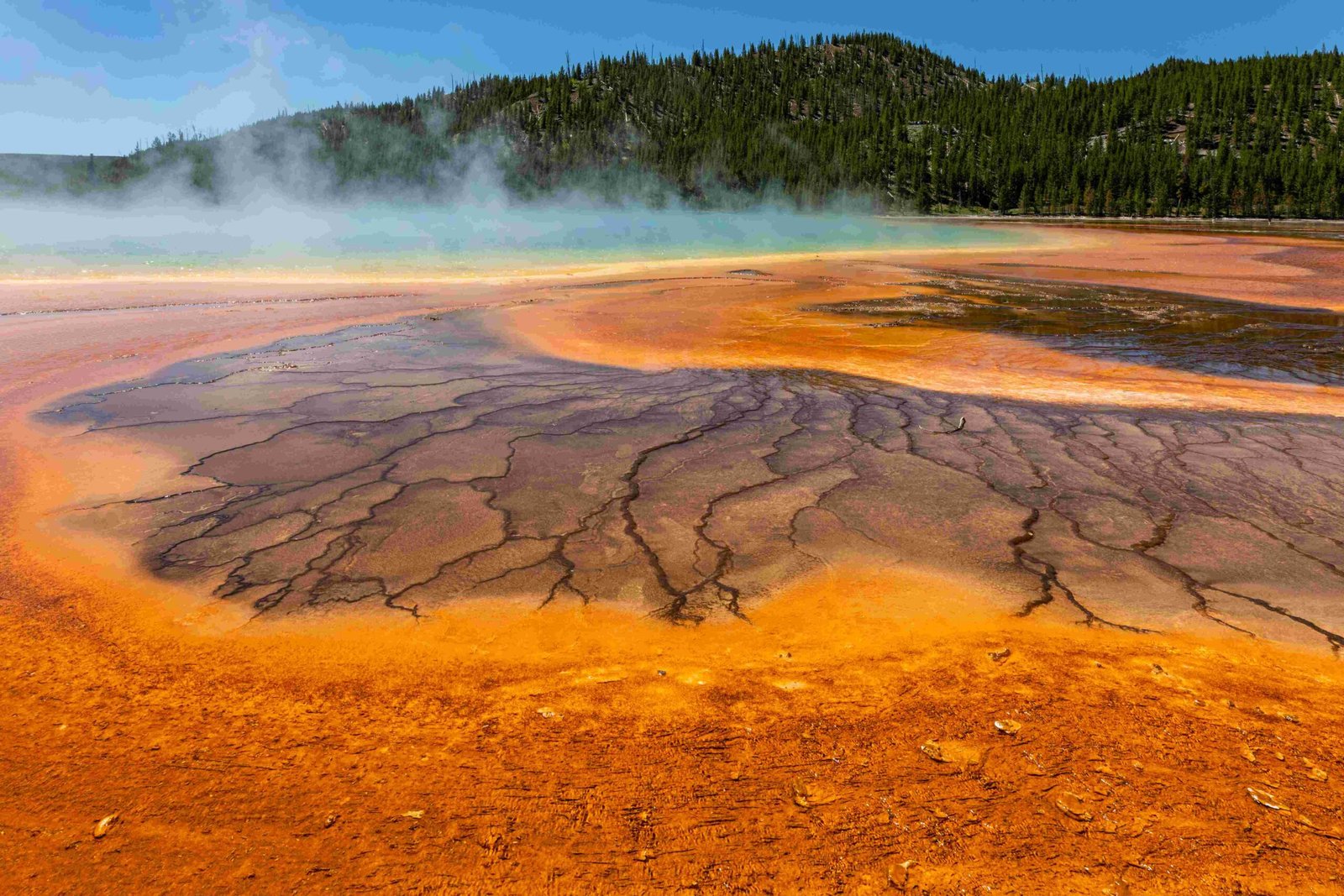Kepler Cascades in Yellowstone National Park is a stunning waterfall located 2.5 miles south of Old Faithful. This natural wonder features a series of cascades dropping 150 feet over multiple tiers, with the largest single drop being 50 feet. Carved by the Firehole River into Quaternary-age volcanic flows, Kepler Cascades offers visitors a breathtaking display of nature’s power and beauty. The cascades are easily accessible from a roadside turnout, making them a popular stop for park visitors seeking to experience Yellowstone’s diverse geological features.
What are the Geological Features of Kepler Cascades?

Kepler Cascades is a testament to Yellowstone’s volcanic history and ongoing geological processes. Here are the key features:
- Formation: Carved into trachyte lava and volcanic rock formations by the Firehole River
- Height: Total drop of 150 feet over multiple tiers
- Largest Drop: 50 feet in a single cascade
- Water Source: Firehole River, known for its warm water due to geothermal activity
The cascades are part of the larger Yellowstone ecosystem, which is characterized by diverse geothermal features and volcanic landscapes. The warm waters of the Firehole River, which form the cascades, add a unique element to this natural spectacle.
How Can Visitors Access Kepler Cascades?

Accessibility is a key factor in the popularity of Kepler Cascades. Here’s what visitors need to know:
- Location: 2.5 miles south of Old Faithful
- Parking: Available at a turnout on the west side of the road
- Viewing Options:
- From the road turnout (wheelchair accessible)
- Trail to the base of the falls (steep, not wheelchair accessible)
| Access Point | Accessibility | Description |
|---|---|---|
| Road Turnout | Wheelchair Accessible | Easy viewing from the parking area |
| Trail | Not Wheelchair Accessible | Steep path leading to the base of the falls |
While the road turnout offers an accessible viewing option, those able to navigate the steep trail to the base of the falls will be rewarded with a more immersive experience.
When is the Best Time to Visit Kepler Cascades?
The best time to visit Kepler Cascades depends on your preferences and the experience you’re seeking. Consider the following factors:
Time of Day
- Early Morning: Soft light, fewer crowds
- Late Afternoon: Golden hour lighting, enhanced colors
- Midday: Bright light, but can be harsh for photography
Seasonal Considerations
- Spring: Milder weather, fewer crowds, potential for high water flow
- Summer: Peak season, warmest temperatures, most accessible
- Fall: Colorful foliage, fewer crowds, pleasant temperatures
- Winter: Snow-covered landscape, accessible via cross-country skiing
For the optimal experience, consider visiting during the shoulder seasons of spring or fall when the weather is mild and crowds are thinner.
What Photography Tips Can Enhance Kepler Cascades Images?
Capturing the beauty of Kepler Cascades requires some planning and technique. Here are some tips for photographers:
- Equipment:
- Wide-angle lens for capturing the entire cascade
- Telephoto lens for focusing on specific details
-
Tripod for stability, especially in low light conditions
-
Camera Settings:
- Slow shutter speed to capture water movement (1/15 to 1 second)
- Low ISO for cleaner images (100-400)
-
Small aperture (f/8 to f/16) for greater depth of field
-
Composition Techniques:
- Include foreground elements for depth
- Use leading lines (like the river) to guide the viewer’s eye
-
Experiment with vertical and horizontal orientations
-
Lighting Considerations:
- Use a polarizing filter to reduce glare and enhance colors
- Shoot during golden hour for warm, soft light
- In harsh midday light, focus on capturing details or consider black and white photography
Remember to respect the natural environment and stay on designated trails while photographing Kepler Cascades.
What Wildlife Can Be Seen Near Kepler Cascades?
While specific wildlife sightings at Kepler Cascades are not guaranteed, the surrounding Yellowstone ecosystem is home to a diverse array of animals. Visitors might encounter:
- Large Mammals: Elk, bison, deer
- Predators: Bears (both grizzly and black), wolves (from a distance)
- Small Mammals: Squirrels, chipmunks, marmots
- Birds: Osprey, bald eagles, various songbirds
Always maintain a safe distance from wildlife and follow park guidelines for animal encounters.
How Does Kepler Cascades Fit into Yellowstone’s Geothermal System?
Kepler Cascades is part of Yellowstone’s extensive geothermal system, which is driven by the Yellowstone Caldera. Here’s how it fits in:
- Water Source: The Firehole River, which forms the cascades, is warmed by numerous hot springs and geysers upstream.
- Geological Context: The cascades are carved into volcanic rock, a testament to the park’s volcanic origins.
- Ecosystem Impact: The warm waters contribute to unique microbial communities and influence local plant and animal life.
Understanding Kepler Cascades in this context helps visitors appreciate the interconnected nature of Yellowstone’s geological features.
What Safety Precautions Should Visitors Take at Kepler Cascades?
While Kepler Cascades is a relatively safe attraction, visitors should still take precautions:
- Stay on designated trails and viewing areas
- Be cautious on the steep trail to the base of the falls, especially in wet conditions
- Keep a safe distance from the water’s edge
- Be aware of wildlife in the area and maintain appropriate distances
- Carry water and sun protection, especially in summer months
- In winter, be prepared for icy conditions and use appropriate gear for cross-country skiing
By following these guidelines, visitors can safely enjoy the beauty of Kepler Cascades while preserving the natural environment for future generations.
Reference:
1. Wikipedia – Kepler Cascades
2. AllTrips – Kepler Cascades, Yellowstone National Park
3. USGS – Kepler Cascades — Yellowstone National Park

